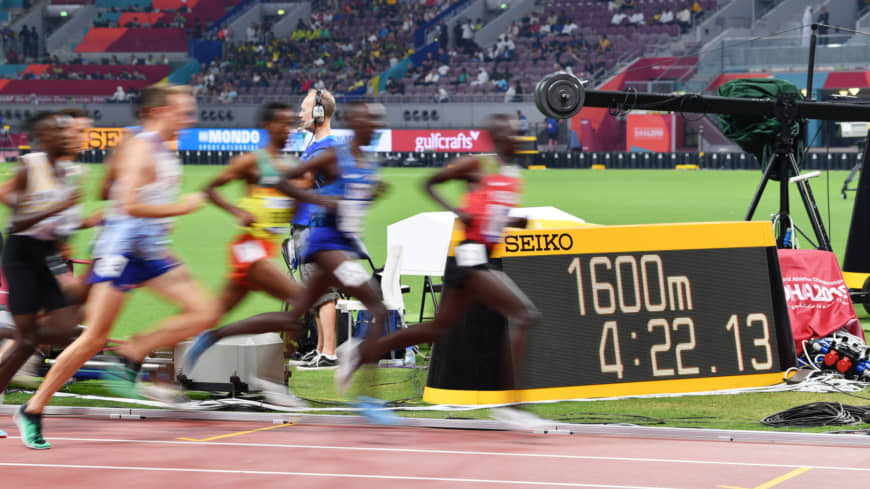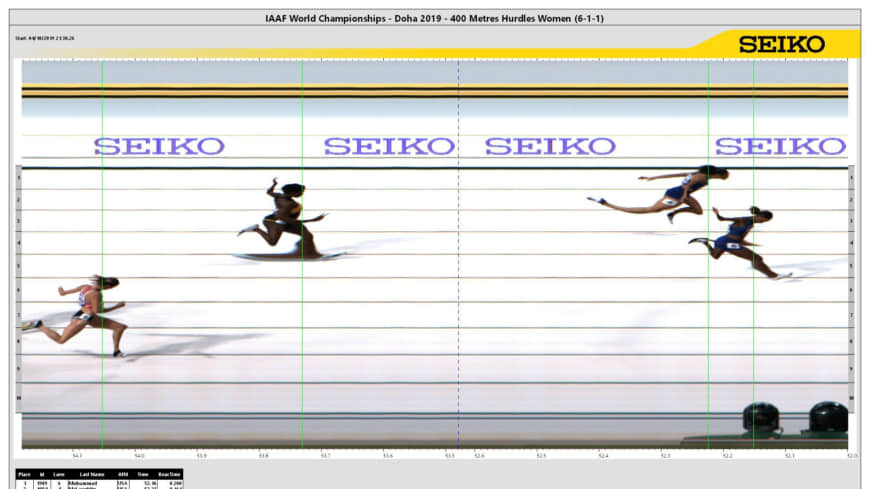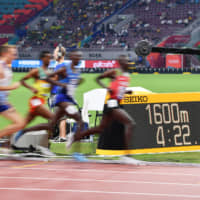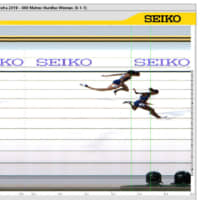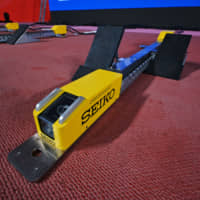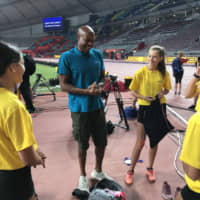As the 2019 International Association of Athletics Federations (IAAF) World Championships wrapped up in Doha on Oct. 6, Seiko once again accurately recorded every second and centimeter of the athletes’ efforts.
Monitoring and overseeing the 1,972 elite athletes from 208 countries and regions, 68 members — hailing from eight countries — of Seiko’s timing team handled 58 tons of timing and measuring equipment. They were on hand to measure three new world records, as well as six championship records set at the 17th world championships.
Seiko has long supported the IAAF and has been the official timer of the championships for the past 16 iterations. Although the event in Doha — the first time that it was held in the Middle East — presented athletes and officials with challenges as they faced temperatures that soared over 40 degrees Celsius, Seiko was proud to be on hand as a Qatar athlete took the gold medal in the men’s high jump.
Thanks to Seiko’s technology, among other factors, the World Championships ended in great success.
Start to finish accuracy
The company provides technology to assist starters and officials who judge false starts.
There are pressure sensors that measure the force the athletes exert on each starting block footplate. The pressure change that results when the athlete takes off is compared to the timing of the start signal. Any change before the start gun or within one-tenth of a second after is recorded as a false start. Following the detection of a false start, a pistol sound is emitted to inform runners and officials of the false start.
Additionally, two cameras are focused on each competitor in the starting blocks (Seiko Start Information System), which allow officials to see even the slightest movement that may indicate a false start.
The electronic start pistol concurrently starts the clock and generates a starting sound from speakers in the starting blocks themselves, as well as speakers placed in the infield of the track.
Incredibly precise cameras that are synchronized with the electronic starter pistol contribute to generating official race times. As the athletes approach the finish line, the cameras are taking 2,000 highly detailed images per second. These images are then combined to produce photo finish pictures that allow the judges to see the order of the sprinters’ finish and their official times.
The photographs let the officials accurately note the finishing time of each athlete to one-thousandth of a second. Cameras are placed in both the infield and outfield to provide additional views in the event that a competitor blocks a fellow athlete. Such precision is necessary — a single image may be the difference between gold and silver medals, as well as meet and world records; this is what makes athletics so compelling.
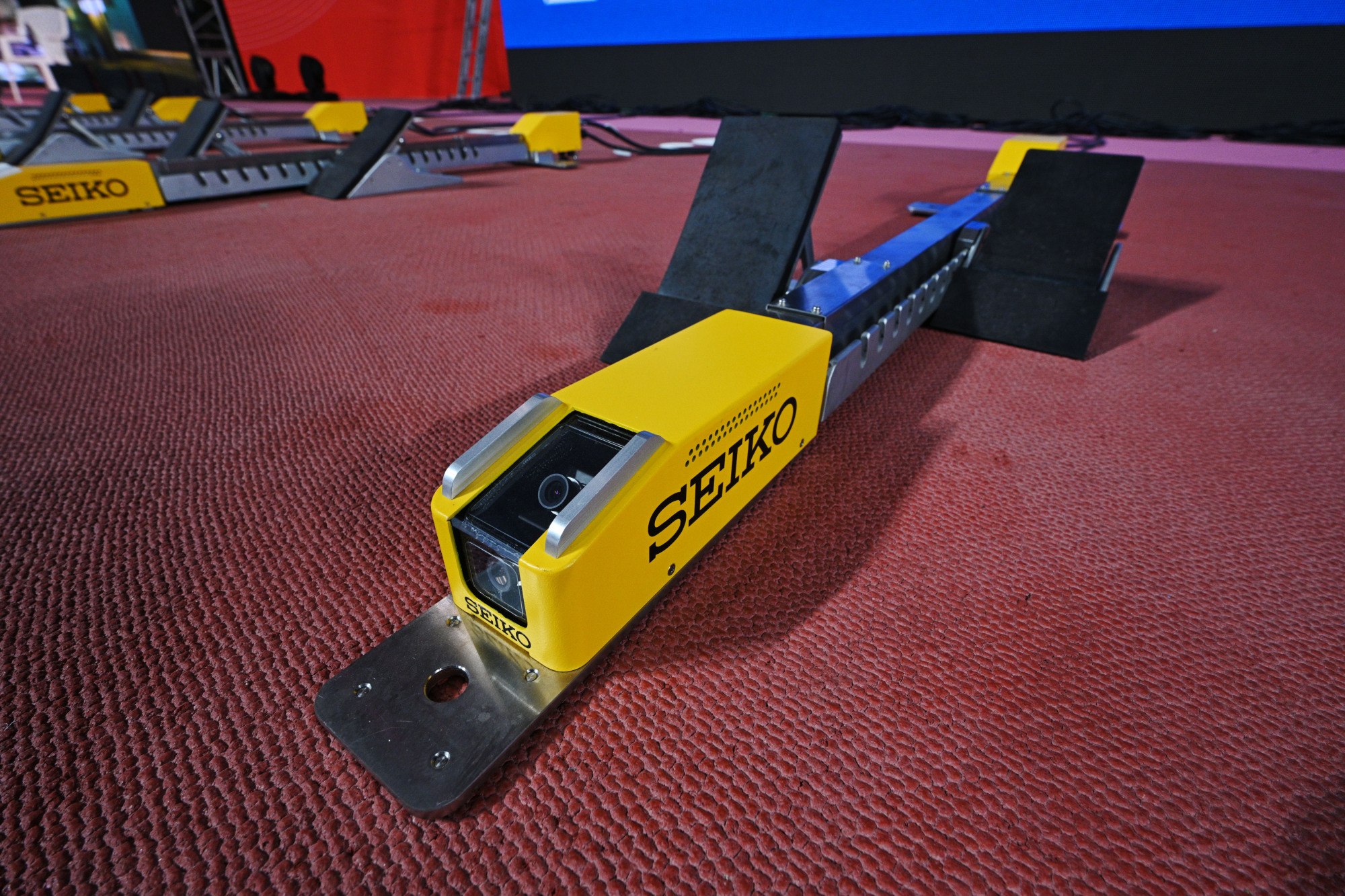
A new perspective
Alongside Seiko’s existing technology, there were some additions to the company’s equipment to enhance the viewer experience.
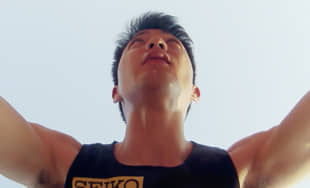
Debuting at this year’s championships were Seiko’s starting blocks featuring their new Block Cam technology. Featuring two cameras in the front portion of the starting blocks, the technology allows television viewers to see the action up close. One camera looks up, giving fans a chance to see the focus and concentration on the faces of their favorite sprinters. The other camera, angled to look down the track, offers a chance to better experience the explosiveness and excitement of the athletes as they take off after the gun. This technology, developed over the course of two years in coordination with the IAAF, promises to give spectators a more comprehensive and immersive experience.
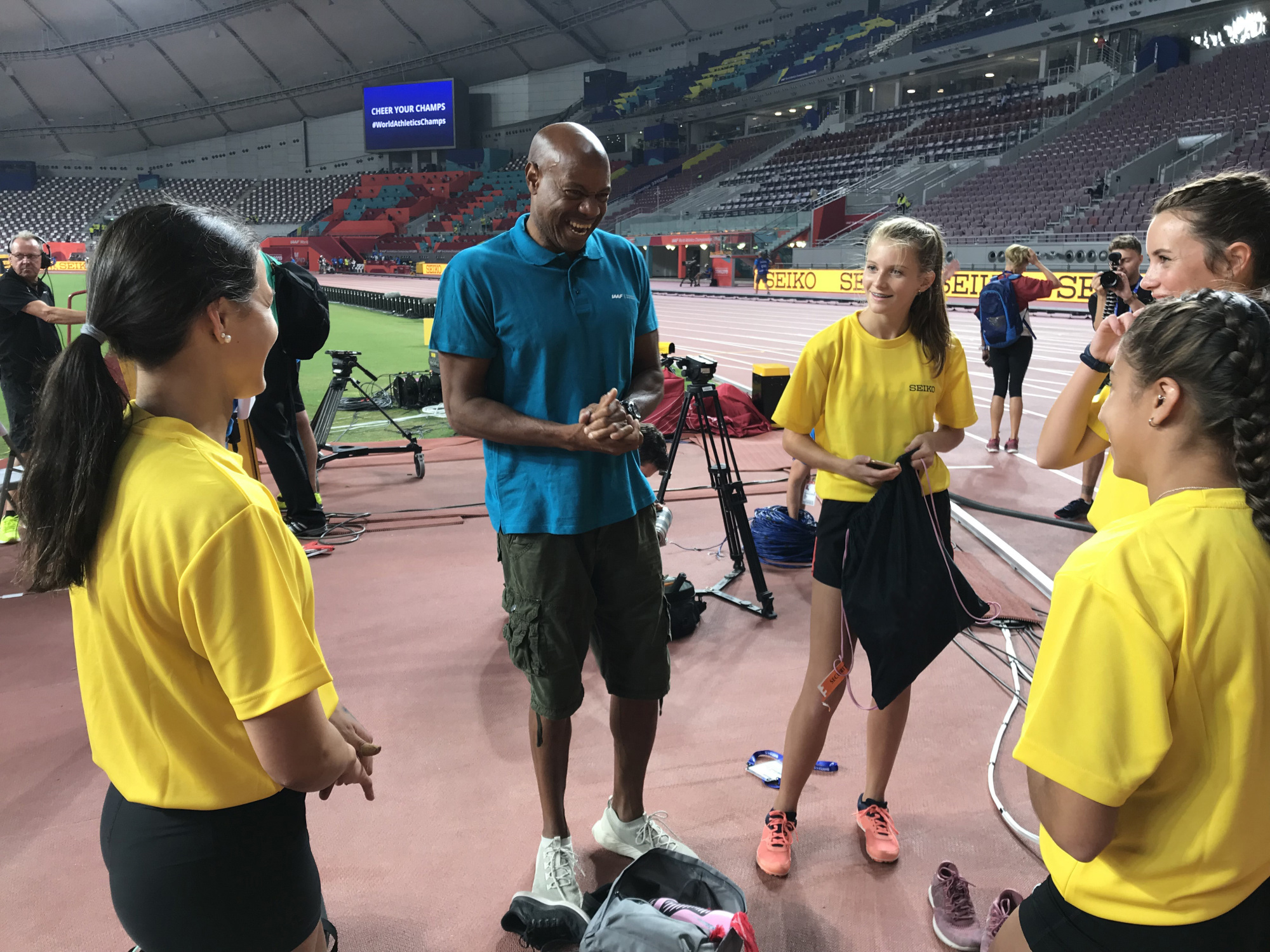
‘Time to Shine’
In addition to providing timing and measuring to the championships, Seiko invited youngsters to experience the event by allowing them to run 100 meters on the stadium track. The event “Time to Shine” was joined by American long jump legend Mike Powell, who set the long jump world record of 8.95 meters at the third World Athletics Championships that were held in Tokyo in 1991, where his record was measured by Seiko’s Electronic Distance Measurement system. He is an IAAF ambassador and holds a record that has remained unbroken for 28 years.
Looking ahead
Seiko is constantly innovating and improving technology to provide the most accurate timing and measurement systems for competitors and officials alike, providing a fair and transparent timekeeping method for athletes. The company also strives to use its technology for the best viewing experience.
Seiko is looking forward to continuing its successful partnership with the IAAF at the 18th World Athletics Championships in Eugene, Oregon, in 2021, as well as the 19th championships in Budapest in 2023.



